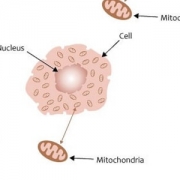Genomics first: identifying inflammatory disease
Scientists have discovered a new rare and deadly inflammatory disease in men, but how did genomics lead them to it?
Recent research from the US National Human Genome Research Institute (NHGRI) has identified a new rare inflammatory disease with a high fatality rate.
The study, which focused on looking at genes first – rather than symptoms, could set a precedent for the discovery of new inflammatory diseases.
Inflammation
Inflammation is a natural part of the body’s response to infection and injury, stimulating increased blood flow, mobilising important immune cells and clearing away damaged tissue. However, when inflammation occurs in the wrong context, it can cause a number of problems, including allergies, autoimmune conditions, arthritis, coeliac disease and transplant rejection.
Chronic inflammatory diseases include well-known conditions such as multiple sclerosis and lupus, but there are many more and, because these diseases often have overlapping symptoms, it can be very difficult to get a precise diagnosis.
Now, as a result of the NHGRI’s study, a new genomic approach has been developed that could help bring diagnoses to more patients.
Working backwards
Usually, researchers use symptoms to group patients together and then look for gene variants shared by all or some members of the group that could be causing the disease. However, because the symptoms of various inflammatory diseases overlap, a different approach was needed.
“We had many patients with undiagnosed inflammatory conditions…and we were just unable to diagnose them,” said NHGRI fellow Dr David Beck. “That’s when we had the idea of doing it the opposite way. Instead of starting with symptoms, start with a list of genes. Then, study the genomes of undiagnosed individuals and see where it takes us.”
The team looked at the genomes of 1,000 patients with signs of inflammation and recurrent fevers, and a further 1,560 patients with unclassified chronic inflammation. Within these genomes, they looked for patterns in around 800 genes that are known to be associated with ubiquitylation: the process of tagging misfolded proteins with another protein, ubiquitin, and so marking them for the cell to break down. Ubiquitination is essential to the regulation of many protein functions inside cells and the wider immune system, and variants present in related genes can have harmful effects.
Initially, a single gene called UBA1 was identified for investigation because three men appeared to have a harmful variant in it, but further work showed that they also appeared to have a healthy copy. This is unusual because the location of the gene on the X chromosome meant that the men should only have one copy. This turned out to be the result of mosaicism (when a person has more than one genetically different collection of cells) in all cases, with the harmful variant found in their myeloid cells, which play a key role in inflammation.
Once the variant was identified, database searches found another 22 males with the variant who had matching symptoms but no diagnoses. From this larger group, it was then possible to define the new condition.
The ‘new’ syndrome
VEXAS (vacuoles, E1 enzyme, X-linked, autoinflammatory and somatic syndrome) is a genetic condition caused by variants in the UBA1 gene on the X chromosome. Symptoms include blood clots in veins, recurrent fevers, abnormalities in the lungs and vacuoles (membrane-bound cavities) in myeloid cells within the bone marrow. Because the condition is X-linked, all of the affected individuals identified so far are men.
The UBA1 gene encodes a protein critical to activating ubiquitin. When this protein is not present in the cell, cytokine levels become elevated, triggering inflammation. In the case of VEXAS, this has extremely serious implications for health: 40% of the patients identified in the study have already died.
The new ‘genomes first’ approach which identified VEXAS has the potential to lead to more precise and effective diagnosis of inflammatory diseases, leaving fewer patients without a diagnosis and saving lives in the process.
–









